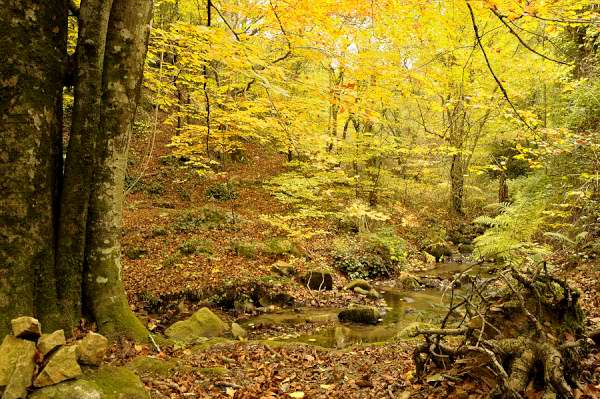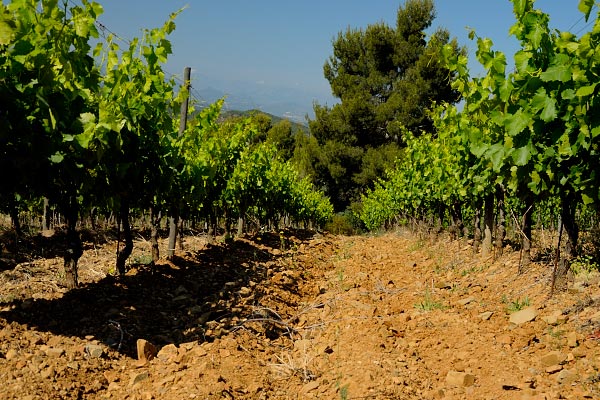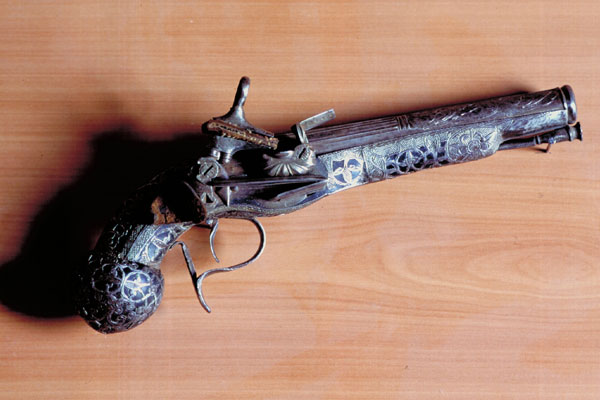
Joan Sala, alias Serrallonga, the last bandit
Joan Sala, alias Serrallonga, the last bandit
His life in the Montseny natural park and Guilleries region
Serrallonga in the beginning

The real name of Serrallonga, the last bandit, was Joan Sala i Ferrer. He was born in a house called La Sala, in April 1594. This farm is now a set of buildings. The oldest and main one has a defensive wall and a medieval tower, which was built in the 14th Century. The other buildings were built in the 17th Century.
Joan Sala had 3 sisters and 2 brothers. His mother, Joana Ferrer, died in January 1598 giving birth to her last child.
Four months later, on the same day, Joan Sala’s father married Margarida and Joan’s eldest brother Antoni married Elisenda. Elisenda and Margarida were sisters, and part of the Riera farm, located in Tona.
Joan Sala’s father had three more sons with his new wife. They would become members of Joan’s band some years later.
In 1610 Serralonga’s father died so Antoni, the eldest son, inherited all the properties. Antoni died in 1634, just a few days before Joan was whipped in Barcelona.
Serrallonga’s marriage
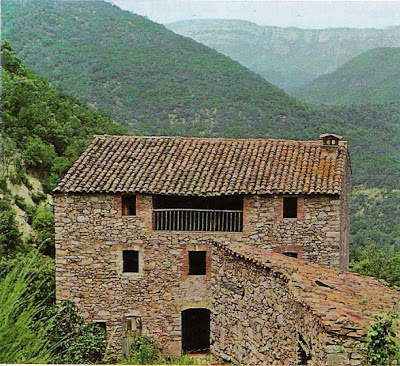
Living in la Sala was not easy. There were frequent arguments. The house was shared by many relatives: brothers, sisters-in-law, nephews, uncles, stepbrothers, stepmothers and so on.
Serrallonga worked in can Tarrés, a farm in Sant Hilari de Sacalm, where he met his future wife. Serrallonga married Margarida Tallades Serrallonga, aged 17 in March, 1618.
Margarida lived on the Serrallonga farm (that’s the reason why the alias of Joan Sala is Serrallonga), located near Querós, a small village situated in Les Guilleries, a mountainous and rough area next to the Montseny massif. Serrallonga was a quite isolated house.
Margarida’s father passed away one year before her marriage, so Margarida was la pubilla when she got married. Being la pubilla involves inheriting all the family properties.
After marriage, Serrallonga left la Sala farm and moved to the Serrallonga farm. When he arrived at his new home, 12 people were living there!: Margarida’s grand-father, his brother, two uncles of Margarida, Margarida’s mother, Margarida’s four sisters and two brothers, … Nevertheless, the farm did not owe money and had enough cattle and lands to sustain the complete family.
Serrallonga and Margarida had five sons.
Serrallonga, the man

Serrallonga had a strong and vengeful personality; he used to freak out and was also reckless: he would steal with his face exposed and burn haystacks in revenge; he also cut the nose of a woman who reported one of his thefts and would kill anybody who harmed his band, his family or himself.
Serrallonga was a tall, swarthy, handsome man with a thin moustache.
He and the members of his band would use pedrenyals, a kind of gun that was fired using a spark from a piece of flint.
Serrallonga was noble and loyal to his friends and to everybody who would help him, whereas he was efficient and violent when he needed to steal or to kill somebody.
He was not a greedy man and never took the biggest part of the spoils.
The banditry

Banditry was very common in Catalonia at that time.
The Alburquerque duke greatly reduced banditry because he killed hundreds of bandits and those who helped them. He also sent moles to France, requested the extradition of many bandits who had escaped, fought against clergy immunity and spread salt on the lands of those who supported bandits.
At that time, there were two banditry factions: the nyerros and the cabdells. Serrallonga’s band belonged to the nyerros faction. The nyerros’ ideals were very close to those of the peasants, the majority of people, so Serrallonga’s band was supported by farmers and villagers.
The banditry disappears after the Segadors war (1640) for two main reasons:
– Alburquerque duke repression
– The economic growth and standard of living improvement which occurred in the 17th century.
Serrallonga, years of fighting

Serrallonga became a bandit at the age of 28 in March 1622 because he had no choice. Serrallonga was tilling his land when an acquaintance, Miquel, revealed to him that he had stolen some clothes and told him the place where they were hidden.
One week later Miquel died, and Serrallonga picked up those clothes and hid them at home.
He told the story to a friend, Mr. Bofarull, and this friend betrayed him: Mr. Bofarull told the story to the royal officials. The clothes were found at Serrallonga’s house and some days later, officials came to arrest Serrallonga. He was shot but he managed to escape.
Also, Serrallonga had bought a mule from his stepbrothers who had it stolen from their mother, Serrallonga’s stepmother.
After the escape, Serrallonga came back home. But royal officials returned guided by Mr. Bofarull. Serrallonga shot and killed Mr. Bofarull and escaped.
Serrallonga used to cross over to France whenever he felt besieged by the royal army.
The bandits had lovers, who were also members of the band. The women wore short skirts, hats and guns, and would participate in the thefts. Serrallonga had at least 3 lovers.
1626

Serrallonga started to shine as a bandit. His band and Margarida’s brothers’ band were the most important bands in the nyerros faction. They helped each other and even collaborated in some thefts.
Philip IV was desperate. He did not succeed in eliminating the banditry.
In April 1626 the royal Governor in Catalonia, Aleix de Marimon, informed Philip IV that 40 of Governor’s men have been fought against Serrallonga but he always managed to escape, and complained that no villagers helped Governor’s men and most of the farms lodged bandits.
He suggested that the king should burn the farms, woods and lands of Serrallonga supporters. Once, the governor imprisoned all villagers of Roda de Ter, a village in the region.
However, the chase was so intense that Serrallonga had to escape to France.
Serrallonga, the last bandit. 1627
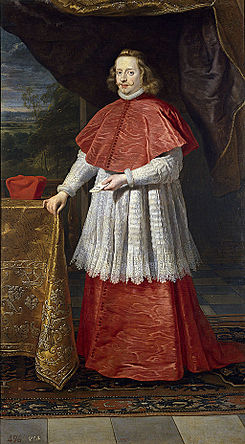
The large number of troops used to chase bandits eventually succeeded because 8 popular bandits were arrested.
In autumn Serrallonga returned to Rosselló, which was not then part of France. The Margarida brothers’ band had been dissolved.
Philip IV delegated the difficult task of chasing Serrallonga to the most capable men:
– Feria duke, viceroy for Catalonia in 1629
– Ferran d’Austria, viceroy for Catalonia in 1632, and winner of the Nordlingen battle.
That changed Serrallonga from a bandit to a myth.
1628

Serrallonga was very active: revenge, thefts, and so on.
During 16 days in the summer, 30 soldiers tried to catch him, without success.
In autumn 19 men devoted themselves to catching him but Serrallonga knew those mountains so well that nobody could find him.
The viceroy, desperate, ordered that all men in the area should join the army. Those were hard Christmas holidays for the villagers.
Serrallonga, the last bandit. 1629
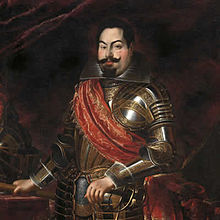
The viceroy reported that Serrallonga could not be caught because he had too many friends and supporters.
During the winter and spring, more men were assigned to chase him, including 40 villagers. The Feria duke offered a reward to anybody who captured the bandit, dead or alive.
In autumn, so many people were looking for him that Serrallonga decided to flee to France.
1630
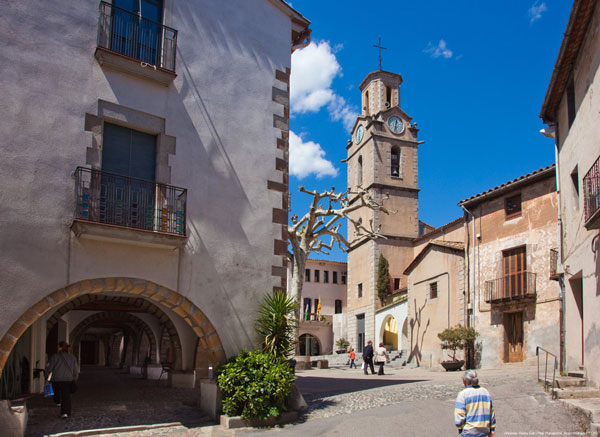
In January, Serrallonga returned to Montseny and Guilleries. In June he had to come back to France.
In October there was a new viceroy for Catalonia: Cardona duke. He ordered all men in the army to capture Serrallonga. A conflict arose because the villagers were obliged to lodge the soldiers.
Serrallonga, 1631: the beginning of the end

Things started to go wrong for Serrallonga. In February, two of the main members of Serrallonga’s band were arrested: Cebrià and Lo Negre de Tona.
In spring Serrallonga returned from France. He stole here and there and always managed to escape. The viceroy was distraught.
In July, there was more bad news for Serrallonga: his stepbrother Joan was captured. In September, another bandit was captured, formerly a member of Serrallonga’s band, and now leader of a new band.
He escaped but in November he was killed by a shepherd, near the village Taradell, in a place named after the bandit, Tocasson.
In late September, Serrallonga and all his lieutenants took refuge in France. But this retreat resulted in bad consequences: his five main lieutenants were captured in France, as well as other members of the band.
The landlord Durban, who lived in Corbieres, collaborated with the Spanish authorities in return for money. Serrallonga managed to escape thanks to another landlord, Mr. Viver, who hid him in his castle.
All the band members were tortured and killed, except two brothers who promised to confess everything in return for keeping them alive. Nevertheless, they said nothing that could jeopardize Serrallonga.
1632

In early summer, Serrallonga came back from France and continued stealing in Les Guilleries.
The reward for his capture was doubled but Serrallonga continued to evade the royal authorities.
Serrallonga kidnapped a woman during the summer to get a ransom but she became his last lover. Her name was Joana Massissa, a widow aged 20.
The king paid a lot of money to an investigator who travelled to Querós, Vilanova de Sau, Sant Hilari de Sacalm and Arbucies to try to find out who was helping Serrallonga.
1633: Serrallonga’s end

Serrallonga spent the last years of his life, when he no longer had a band, wandering in the mountains with Joana. They were welcomed in many farms where they ate and sometimes stayed overnight.
Serrallonga visited his cousin Miquel Pallerols in Viladrau 38 days before he and Joana were arrested and revealed to Miquel that Joanna was pregnant.
They stayed at Sant Segimon sanctuary at that time. Sant Segimon is located in the Montseny massif, and all the priests were Serrallonga’s friends.
Many of his friends were arrested. The circle around him was increasingly narrow.
October 31 1633, Serralonga was betrayed and captured in l’Agusti farm, in Santa Coloma de Farners. One of the betrayers had been a member of Serrallonga’s band. Nevertheless, Serrallonga resisted his arrest and was seriously wounded on the head.
Later on, he was prisoned in Barcelona until his death. Before, he revealed the name of all people who helped him, including landlords, priests, monastery monks, hoteliers, mayors, and normal people such as shepherds.
The final days of Serrallonga are described in the first paragraphs of our Montseny tour.
Margarida, Serrallonga’s wife, had many difficulties after Serrallonga death because the royal officials burned all their properties. Nevertheless, in March 1634, royal authorities gave permission to Margarida to rebuild the house, where she died in December 1652.
The Montseny tour
We have created a walking tour in Montseny park. We visit the farm where Serrallonga was born and lived before he married. More details here.
If you want to know more about the Montseny Natural Park, go through this article.
Goodbye

Please comment below on Joan Sala, alias Serrallonga, the last bandit.
If you want more information about any topic covered by this article, please do not hesitate to contact me through this contact form. I will be pleased to help you.


